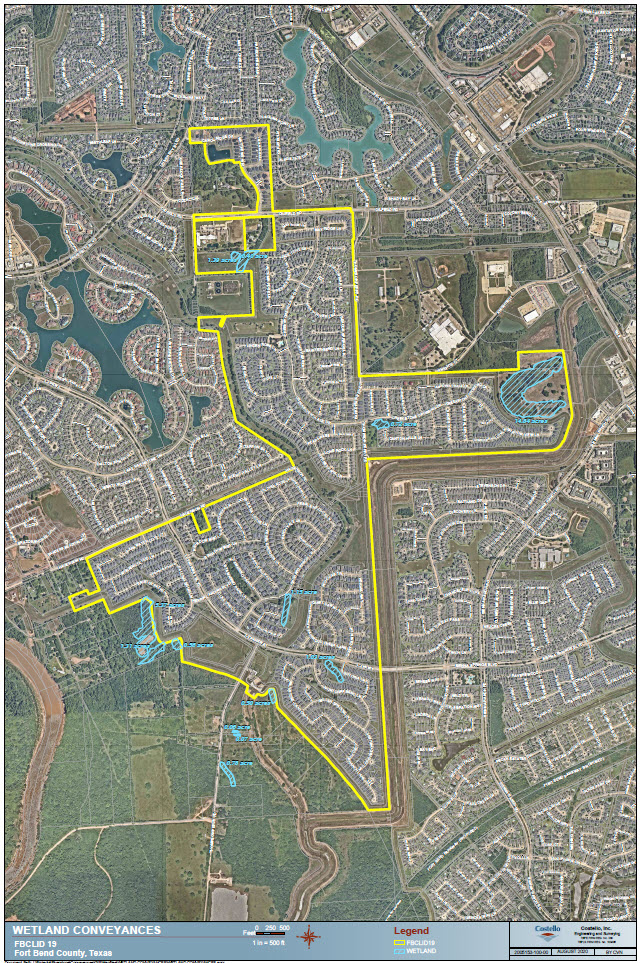Wetlands
As you may be aware, the Clean Water Act creates federal jurisdiction over certain types of waters in the U.S. Under federal law, those jurisdictional waters may include wetlands, which then become subject to additional federal regulation and control.
Prior to development within LID 19, small areas within LID 19 were identified as potentially jurisdictional wetlands. Accordingly, the developer requested approval from the United States Army Corps of Engineers (USACE) to develop the area, subject to certain requirements in a permit issued by the USACE.
Under the USACE wetlands permit, certain small wetlands that may have been impacted by the development of LID 19 were required to be preserved as natural wetlands sites (see map). The LID’s ability to modify these natural wetlands is somewhat limited, and the Board works with environmental specialists to identify limited maintenance that is permissible under the permit. However, the LID may have some ability to remove dead or decaying trees and other vegetation that may impede drainage or otherwise pose an unreasonable public health and safety risk. If you are concerned about any of the wetlands sites, please feel free to contact the LID through the “contact me” tab. Please be aware that these wetlands sites are not intended as public recreational sites, and we encourage the exercise of caution near these areas.


